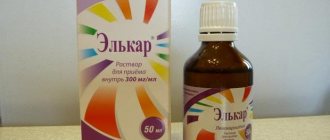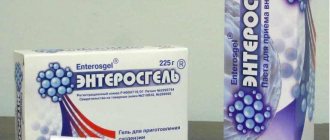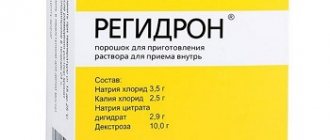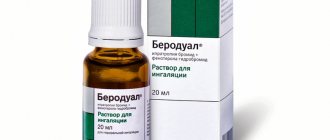The BCG vaccine, created almost a century ago, remains today the only effective way to protect against tuberculosis. Over the past period, she has saved thousands of lives. There are few supporters of the anti-vaccination movement in our country.
Doctors usually manage to convince them of the need for immunoprophylaxis. Having received general information about the BCG vaccination, it becomes clear that although the vaccine does not guarantee future protection against infection, it will definitely protect against deadly tuberculosis complications.
What is BCG: deciphering the abbreviation
Why does the world-famous tuberculosis vaccine have such an unusual name: BCG. The fact is that this is a Russian translation of the English abbreviation “BCG”.
In letter-by-letter decoding it looks like this:
- B (Bacillus) – bacillus . This means that the drug is based on infectious (virulent) bovine mycobacterium tuberculosis (Bovis);
- C (Calmette) – Calmette . French microbiologist who created a vaccine and, as a result of numerous reseedings of viral strains, obtained a new culture called BCG;
- G (Guérin) - Guerin . Co-author of the drug, French by origin and veterinarian by profession. Together with Calmette, he devoted 13 years to developing the vaccine.
Calmette found that artificial resistance of the body to the virus can be created through immunization. However, practice has shown that killed bacteria are not suitable for this. We had to create a “live” but weakened drug.
It must, on the one hand, not be destroyed in the external environment (otherwise the drug cannot be stored for a long time) and, secondly, cause disease to the extent that the body can develop immunity to it. After hundreds of recultures of the tuberculosis strain, Calmette and Guerin managed to create a BCG vaccine.
Thus, the names of both research scientists are immortalized in the name of the drug. But the vaccine was liquid and was not stored for a long time. In the last century, Russian microbiologists modified the drug, making it in the form of a dry mixture, which is dissolved before use.
Why such a rush?
Doctors are also often asked why BCG is done so early. When they are vaccinated, parents are perplexed why a newborn, still fragile child is subjected to such a test on the third day. The fact is that the situation with tuberculosis is such that not all patients know about their problem and continue to lead their usual lifestyle. Being carriers of a dangerous infection, they freely visit public places, which poses a great threat, especially for a small child. The risk of a baby encountering bacteria is very high. That is why the vaccination is carried out as early as possible, so that at the time of discharge the child has already begun to develop immunity to Mycobacterium tuberculosis.
Composition and mechanism of action
BCG is an anti-tuberculosis vaccine used for preventive purposes. The active component of the drug used today in Russia is live (but weakened) mycobacteria of the BCG-1 strain.
BCG vaccine
They are in the ampoule in dry form and look like a whitish-yellowish powder. It is also available in tablet form. The package contains 5 ampoules of 0.1 mg each, each containing 10 or 20 doses.
In addition, the kit is supplemented with 5 ampoules of solvent (2 ml each), necessary for mixing with the dry drug in the required proportion. 1 vaccination dose of the vaccine is 0.05 ml of the drug.
Any of the modern tuberculosis vaccines contains a mixture of killed and weakened pathogenic bacilli of one of the following strains:
- Danish;
- French (Pasteur);
- Tokyo;
- Glasco strain.
All of them are equally effective and safe. How does BCG “work”? It turns out that viral agents entering the body are attacked simultaneously by antibodies (the vaccine produces them) and cellular immunity. Moreover, the latter is more significant.
It is important to understand that BCG does not protect against tuberculosis pathogens. It is only a way to prevent possible infection with mycobacteria in the future. This means that vaccination is guaranteed to save a person’s life, even in the case of severe forms of tuberculosis: with brain damage or disseminated.
BCG: what is it?
The BCG vaccine is used to prevent severe forms of tuberculosis.
It also protects against the most dangerous complications if a person does get sick. Tuberculosis is a common infectious disease (Fig. 1). In the world, up to 10 million people fall ill with it every year, and up to 1.4 million people. dies from this disease. In Russia, the incidence of tuberculosis has been declining in recent years. In 2021 it amounted to 41.2 people. per 100,000 population, and mortality is 5.2 people. per 100,000 population. Despite this, tuberculosis infection remains dangerous, and BCG vaccination is important to protect against it.
Figure 1. General information about tuberculosis. Source:
The BCG vaccine is live. It contains live vaccine strains. They are obtained using weakened bovine tuberculosis bacilli Mycobacterium bovis.
M. bovis is a mycobacterium of the tuberculosis complex that can cause tuberculosis in humans in the same way as the main causative agent of the disease, Koch bacillus (Mycobacterium tuberculosis). Bovine tuberculosis bacillus and Koch's bacillus have a number of similarities and differences. M. bovis produces a similar immune response and can be weakened in vitro. This allows the strain to be used for the production of a live attenuated vaccine.
Back in 1908, the development of BCG began in France. The vaccine was named after the first letters of the surnames of its creators, Albert Calmette and Camille Guérin: Bacillus Calmette-Guérin or BCG. It was tested in 1921, but the tests were unsuccessful. Later it was transferred to the USSR. Since the 1950s, the mass use of BCG for vaccination began in the USSR and other countries. New vaccines are currently being developed, but for now BCG remains the only means of immunoprophylaxis against tuberculosis.
In countries where the incidence of tuberculosis is high, WHO recommends that all healthy newborns be vaccinated in the first days of life. Russia is one of such countries. In regions where the incidence of tuberculosis is decreasing or is low, vaccination against tuberculosis is carried out selectively, only for risk groups.
Why are BCG vaccinations given to children and adults?
Today, anti-tuberculosis prevention is a mandatory measure for 64 countries of the world and is recommended in 118.
Even if BCG is not included in the vaccination calendar of a particular state, vaccination is still carried out among socially disadvantaged populations.
In Russia, anti-tuberculosis vaccination is mandatory if there are no contraindications. Immunization at an early age reduces the incidence of the disease by 15 times and prevents the development of severe pathologies in the newborn.
Therefore, in our country, infants are vaccinated with BCG already in the maternity hospital. For adults, mass immunization is not carried out, but if necessary, you can be vaccinated individually. Tuberculosis, as is known, is transmitted by airborne droplets, and, therefore, you can catch dangerous bacilli anywhere and at any age.
It is important to understand that you can become infected even if you have a fairly high standard of living, since an infectious pathogen can “sleep” in the body for many years and appear at the right opportunity.
To vaccinate again or not: pros and cons
Doctors and parents have different opinions regarding whether it is worth re-vaccinating against tuberculosis. Pediatricians recommend revaccination, since BCG protects against infectious pathology only for 6-7 years, and the risk of infection with Koch's bacillus in the country is high: people with tuberculosis move freely around the city, travel on public transport, visit playgrounds and shops. Doctors assure that a temporary deterioration in health from the BCG vaccination is much safer than the negative consequences that a child may face if he becomes infected with Koch’s bacillus.
Many parents are afraid to vaccinate their children against tuberculosis due to the high risk of developing adverse reactions from BCG. But pediatricians reassure that before immunization the baby is examined, a Mantoux test is done, contraindications are identified, and during the procedure doctors follow all the rules of asepsis and antiseptics. Therefore, the likelihood of any complications is minimal.
Some of the reviews from pediatricians and parents about the BCG re-vaccination are given below:
- Tatiana. My daughter turns seven this year. According to the National Vaccination Schedule of the Russian Federation, she should be revaccinated against tuberculosis. But I’m afraid to give a BCG injection: after immunization in the maternity hospital, the girl had a temperature of 38-38.6 degrees for about four days and was vomiting. The pediatrician claims that this is a normal reaction of the body. I will take the child for a full examination: perhaps my daughter will have contraindications and it will be possible to avoid re-vaccination.
- Vladislav. I am a pediatrician and have been practicing for 15 years. I consider BCG vaccination to be the only correct solution to protect a child from a dangerous infectious disease. The drug can cause deterioration in health in the form of fever, weakness, redness and swelling of the injection site. But, as a rule, everything goes away after a few days. Before sending a child for vaccination, I study his medical history, conduct an examination and communicate with the parents. This allows me to identify contraindications and prevent the development of adverse reactions.
- Vitaly. My son is already 15 years old. He was vaccinated against tuberculosis with BCG twice. The boy tolerated all the manipulations well. The only thing is that for two days after the first vaccination, the temperature remained at the subfebrile level. I have a good attitude towards immunization. At the age of 34 I had a BCG revaccination. After the procedure, my health did not change at all. I think immunoprophylaxis is the only way to protect yourself from the negative consequences of tuberculosis.
Thus, revaccination with BCG allows you to create reliable protection against tuberculosis disease and prolong the effect of the previous vaccination. There is no need to be afraid of repeated immunization: if no adverse reactions occurred the first time, then the drug will also be well tolerated in the future. Doctors insist on revaccination with BCG and note that if the rules of preparation and technique of performing the manipulation are followed, there should not be any deterioration in a person’s well-being.
At what age is the anti-tuberculosis vaccine given?
In our country, BCG vaccination for children is carried out according to the vaccination schedule:
- in the maternity hospital – 3-7 days of a baby’s life, preferably in the morning. If vaccination is not performed during this period, it will definitely be done in the next six months;
- in the clinic - 6-7 years, if there are no contraindications. This is the first revaccination;
- last vaccination – 14 years.
Tuberculosis immunization is also indicated for adults. Revaccination is carried out for everyone aged 18-29 years. The main condition (for all ages) is a negative Mantoux test. BCG is carried out in the period from 3 to 14 days after the “button”.
From the age of 30, vaccination is done only as prescribed by a doctor or in the following situations:
- the person’s living conditions are poor;
- no record of past vaccinations;
- the region of residence has a high incidence of tuberculosis;
- frequent contact with infected people.
The procedure is carried out only once (despite whether you have previously been vaccinated against tuberculosis or not). This is quite enough to develop immunity in an adult.
Features of vaccination
It is important to carry out vaccination against tuberculosis as early as possible, in the first few days after birth. This will allow you to activate your immune system faster. If immunization is performed later, BCG vaccination cannot be combined with other vaccines. One month before and one month after vaccination against tuberculosis infection there should be no other vaccinations. An exception is vaccination against viral hepatitis B, which is performed in the maternity hospital on the first day of a child’s life.
When using the BCG vaccine, the correct technique for administering the drug is especially important. It is injected to a certain depth, strictly intradermally. Incorrect injection depth provokes local complications and reduces the effectiveness of vaccination. It is better if the vaccination is administered by medical staff in the maternity hospital. Nurses in maternity hospitals constantly carry out such vaccinations and do them correctly, and in addition, the child will remain under the constant supervision of doctors for some time after vaccination. No special preparation is needed for BCG vaccination.
How to prepare for immunization?
To prevent immunoprophylaxis from causing negative consequences, you need to prepare for it.
A prerequisite is the Mantoux test. This is a kind of test that determines how the body reacts to the infectious agent. If the test is negative, you can do BCG. The interval between procedures is 3-14 days. Today Mantoux + BCG is universal tuberculosis prevention.
Before the procedure, the baby will be examined by a pediatrician. The child's temperature will be measured and Mantoux values will be assessed. If the doctor discovers health problems, the baby will additionally be prescribed consultations with specialized specialists and blood and urine tests.
Here are the rules that should be followed so that the baby goes through the procedure easily:
- You need to be healthy on the day of vaccination. The child should get enough sleep and eat (not overeat). If the baby is naughty the day before and does not eat well, vaccination should be postponed;
- avoid crowded places. 2-3 days before the injection, do not take your child to events where there are a lot of people. There is a possibility of “catching” an infection. And its latent period is up to 3 days. You don’t suspect your baby has a disease and get vaccinated, but the next day the child gets sick. Contacts should be minimized both on the day of vaccination and after it;
- if the baby is allergic, vaccination is possible only during the period of remission;
- eat wisely. Before the procedure, on the day of vaccination and the next day, you should feed the child moderately. It is necessary to reduce the load on the intestines, so the vaccination will be easier;
- Vaccination should be postponed if the baby did not have a bowel movement the day before. Constipation is dangerous due to complications;
- Do not give your baby any medications at your own discretion;
- postpone vaccination if it is hot outside or, conversely, very cold.
Adults should also have a positive attitude before the injection.
Vaccination calendar
BCG is a mandatory vaccination that is performed:
- For a newborn, it is done in the maternity hospital from the 2nd to the 5th day of life. If for some reason vaccination was not carried out at the appointed time, then the baby should be vaccinated within two weeks at the clinic at the place of residence, you can read more about this here.
- Next, revaccination is carried out at 7 years of age.
- At the age of 14.
If the situation with tuberculosis in the country is calm, then the vaccination can be done twice or only after birth.
Before any revaccination, Mantoux must be done. If the papule is of a significant size, it means that the baby has become infected with tuberculosis or has immunity from this pathology from birth. In the future, diagnostics are carried out, which will indicate the real reason for such a Mantoux test reaction.
Important ARVI - symptoms and treatment in adults
The baby's parents may refuse vaccination. To do this, they write a statement in which they indicate that they are familiar with all the consequences and take full responsibility.
Instructions for use
Each package of the drug (for 20 doses) contains:
- 5 ampoules of dry vaccine (1 mg);
- 5 ampoules of solvent (0.2 ml each).
To obtain a dose of 0.05 mg (this is the volume of one injection), immediately before grafting, 2 ml of NaCl solution is injected into the ampoule with the dry preparation. The vaccine dissolves completely within 1 minute. At the same time, it should be shaken. For one injection, 0.2 ml of vaccine is drawn into a 2 ml syringe (this corresponds to 2 doses) and then half of the solution is poured out. The required volume remains in the syringe - 0.1 ml. This dosage is for one healthy child.
Premature babies are vaccinated with BCG M (light version). In this case, the single dose is 0.025 ml. Adult vaccinators are vaccinated at the rate of 0.05 mg of the drug in a volume of 0.1 ml.
BCG cannot be given in combination with other vaccinations. And since this vaccine has a delayed reaction, all subsequent vaccinations are allowed only after a month.
Where to get vaccinated and how does the price differ in different institutions?
The location of vaccination is not important. BCG-M is performed both in public clinics and in private medical centers. The choice of location is determined by the personal preferences of the parents, their financial capabilities, as well as the requirements for comfort and attentiveness of the staff.
Only experienced nurses who have undergone special training and have the appropriate certificate are allowed to perform vaccinations, so the quality of services is approximately the same in all medical institutions. However, in order to receive a high-quality and safe service, it is recommended to choose trusted and licensed clinics and vaccination centers.
Photo 3. Tuberculosis vaccine for gentle primary immunization BCG-M, 5 ampoules of 20 doses from.
BCG-M is an inexpensive vaccine. Its cost in pharmacies is 450–500 rubles per dose. Administration of the vaccine in public medical institutions is completely free, but in private medical centers it will cost 1000–1500 rubles, including a pre-vaccination examination by a doctor. The price varies depending on the level and pricing policy of the private hospital.
Is the tuberculosis vaccine administered subcutaneously or intradermally?
The injection site is the left forearm, or rather its upper outer side. This is a WHO recommendation, and in our country BCG is placed in this zone.
The injection is administered intradermally. This is important to observe, since there are frequent cases of subcutaneous infusion of the drug, which is unacceptable, since the vaccine getting into the deep layers of the skin causes unwanted post-injection complications.
When it is impossible to vaccinate in the shoulder, a place with thicker skin is selected, usually the thigh.
Reaction to BCG
The reaction is the development of papules at the injection site, usually appearing in newborns 4-6 weeks after vaccination. A scar should form at the vaccination site, the size of which can be used to judge the acquired anti-tuberculosis immunity. So, if after BCG a scar measuring 2-4 mm has formed, then they say that the vaccinated body will resist the disease for 3-5 years. If the size is 5-7 mm, then the body is protected for 5-7 years, and with 8-10 mm - for 10 years.
Usually the vaccine is well tolerated, but sometimes reactions occur:
- BCG blushed. If the redness does not spread to the surrounding tissues and is observed exclusively during the period of the vaccination reaction, then this is the norm. In rare cases, in addition to redness, swelling and a keloid scar may form. There can be no cause for concern: this is how the skin reacts to the drug.
- BCG festers. Suppuration and abscesses are a normal reaction to the components of the vaccine, which will go away soon. You should consult a doctor if, in addition to suppuration, there is redness and swelling around the vaccination site: the wound may have become infected, which must be treated.
- BCG is inflamed. You should only worry and consult a doctor if swelling and inflammation spread to the skin of the shoulder, beyond the vaccination site.
- BCG itches. Itching at the injection site is normal, but doctors advise placing a gauze pad over the wound to prevent the child from scratching.
- Temperature after BCG. An increase in body temperature in a newborn to 38 degrees is normal, but if a seven-year-old child experiences an increase in temperature after revaccination, you should immediately consult a doctor.
How it proceeds: normal and complications
If the correct technique for administering BCG is followed and provided that the vaccinator was healthy at the time of vaccination, a small bubble with a diameter of 5-10 mm will form at the injection site.
After half an hour it dissolves without a trace. Over time (after 4-6 weeks if vaccination is carried out for the first time) and after 7 days in case of revaccination, a small swelling appears at this site, and then a tubercle (infiltrate).
Its normal diameter should be 0.5-1.0 cm. Then a crust forms on the tubercle, and ultimately (after 5-6 months) a scar is formed. The vaccination took place. It happens that the scar is too small or absent altogether. This means that the body did not respond adequately to the virus.
In this case, immunization is postponed until the causes are determined. Complications are typical for any vaccine (especially live ones) and BCG is no exception. And yet the risk from them is much lower than that of an unvaccinated person.
Adverse post-vaccination reactions are divided into 2 groups:
- severe cases, usually caused by spreading infection. The reason may be incorrect selection of children for vaccination by the pediatrician;
- milder complications. They usually happen when vaccination technique is violated or a poor-quality injection is administered.
Possible complications with BCG:
- expression of infiltration . In this case, the compaction abnormally increases in diameter (10 mm) with the formation of a painful ulcer. Local treatment, the result is recorded in the medical record;
- cold abscess . It looks like a ball that can be felt under the skin. Cold - because it does not cause redness or temperature. The reason is that the vaccine was administered too deeply. This complication is a purulent formation that requires immediate treatment before the infection breaks through;
- keloid scar . The reason is hereditary pathologies in the vaccinant, when any damage to the skin is accompanied by an abnormal growth of scar tissue. Usually appears a year after vaccination;
- lymphadenitis . Infection in the lymph nodes (axillary);
- osteomyelitis. This is a complex bone disease. Very rare. The reason is the poor quality of the vaccine.
Complications are possible only if the vaccine is administered incorrectly or if the condition of the person being vaccinated is insufficiently diagnosed at the time of the procedure. If you follow all the rules of immunoprophylaxis, such negative consequences are excluded.
Vaccination against tuberculosis: pros and cons
The BCG vaccine has been used for a long time, and it has a number of disadvantages, but so far it remains the most effective way to prevent tuberculosis.
At the same time, it is the effectiveness of immunoprophylaxis that causes the most controversy:
- The BCG vaccine does not prevent tuberculosis infection.
- If a person is already infected with Mycobacterium tuberculosis, the vaccine does not protect against the disease becoming active. According to WHO, a third of people worldwide are carriers of Mycobacterium tuberculosis.
- The immunity formed by the vaccine weakens over several years. Revaccination is not always effective, and because of this, adults are vulnerable to both primary infection and the transition of the latent form of tuberculosis to the active form.
- The BCG vaccine in children prevents up to 80% of severe forms of tuberculosis infection.
- Vaccination reduces the number of deaths associated with tuberculosis by 65%. The incidence of tuberculous meningitis is reduced by 64%, disseminated tuberculosis (with the formation of multiple lesions of lung tissue) - by 78%.
- Even if infected, those who have been vaccinated have a much milder course of the disease, with fewer complications.
The safety of the BCG vaccine is also controversial. Its use can indeed lead to a number of complications, but they occur very rarely. Local reactions associated with a violation of the drug administration technique are more common, but even these are not very common.
What should you not do after immunization?
The vaccination reaction to BCG is formed after 1.5-2 months, but can last up to 4 months. The injection site should not be bandaged or treated with anything (for example, alcohol, brilliant green or iodine).
The formed crust should also not be touched. BCG is administered to the baby on days 2-3 in the maternity hospital, and screening (or blood sampling from the heel of the newborn) is administered in the first 10 days or upon discharge.
It is not advisable to do these procedures together. If there are no postpartum complications in the mother (and the baby is also healthy), discharge is carried out on the 3rd day.
How to prevent the development of complications?
BCG vaccination is usually well tolerated and leads to the formation of stable immunity against tuberculosis. However, if contraindications are not taken into account, the technique of administering the drug is violated, and the conditions for storing and transporting the vaccine are not met, then complications develop. To avoid the development of dangerous reactions, you should adhere to the following recommendations:
- Before vaccination, conduct an allergy test to determine the compatibility of the vaccine with the body. This will prevent complications such as an allergic reaction;
- After vaccination, you should not use antiseptic solutions to treat the skin at the injection site, because they can disrupt the normal post-vaccination process;
- There is no need to squeeze out the pus or apply an iodine mesh to the abscess. If discharge appears at the site of vaccine administration, it is enough to blot it with a sterile napkin;
- Parents should be careful to ensure that the child does not scratch the vaccine injection site. This will help prevent the addition of a secondary infection;
- A few days before vaccination or revaccination at 7 and 14 years old, new foods should not be introduced into the child’s diet. New foods can provoke an allergic reaction, which can be mistaken for a complication after BCG.
It is necessary to strictly follow these recommendations when the child is in the maternity hospital. After all, babies are susceptible to the influence of environmental factors.
Imported and domestic analogues that protect against tuberculosis infection
In our country, anti-tuberculosis prevention is carried out only with domestic vaccines: BCG and its pediatric version - BCG M. Imported analogues (Japanese, Serbian, etc.) have similar characteristics, but they are not commercially available. And do not forget that foreign vaccines are also not without side effects.
BCG M vaccine
Composition of the BCG vaccine
The drug was invented in 1921 by French researchers Calmette and Guerin, who worked on it for 13 years, conducting experiments with the bacteria Mycobacteria bovis. Finally, they were able to isolate an isolate containing bacteria of various subtypes, and it was this that formed the basis for the vaccine. And for almost 100 years, the composition and active ingredient of this product have remained almost unchanged, although the methods of distillation, purification of components, and other technological processes have changed.
Mycobacteria bovis is a bacterium that causes the development of tuberculosis in cattle. However, they also affect people, since they do not have a so-called species barrier. Several subtypes of this bacterium, introduced in a deactivated form to a person, are capable of vaccinating him against tuberculosis caused by this and other types of pathogens.
A Mycobacteria bovis colony is grown on potatoes for one week and then transferred to synthetic media. From there it is removed, filtered, washed and ground. Then a stabilizer is added to the resulting powder. Dilution occurs to a concentration of 50 mg of substance per 1 ml of stabilizer. The solution is processed in a centrifuge for 20 minutes, and then diluted again with the same stabilizer to a concentration of 0.5 mg per 1 ml.
After this, the drug is bottled into containers, which are packaged and sold. This is what the end user ultimately receives.
Such complexities are necessary for the vaccine to have high viability and normal shelf life.
The vaccine may differ in the main active ingredient only in what strain of bacteria was used. 85-95% of all vaccines used in medicine used one of the following strains:
- 1331 (Denmark);
- 172 (Japan);
- 1173 P2 or Pasteur (France);
- 1077 or Glaxo.
In the remaining 10-15% of cases, Moro (Brazil), Russian or Swedish strains are used.
During production in the Russian Federation, the bacteria are placed in a solution of monosodium glutamate for injection. This is a salt that is naturally found in free form in the human body and is even added to food.
A solution of sodium chloride is used as a solvent (again, in Russia). It is added to the vaccine immediately before administration. This substance is also called saline solution.
The BCG vaccine does not contain any other components. Despite the fact that a number of publications have reported that the vaccine contains poisons such as formaldehyde, merthiolate, Tween-80, aluminum hydroxide, no independent official study has confirmed their presence in any of the types of vaccine being sold. However, these erroneous data continue to be manipulated by tuberculosis dissidents and anti-vaxxers.
What can and cannot be done after BCG?
After vaccination, the doctor is obliged to tell the child’s parents how to behave in the post-vaccination period.
Immediately after vaccination, it is not advisable to have contact with strangers for two days. It is better to refrain from visiting crowded places. The body is weakened these days, and infection with any disease can occur. It will be very difficult to leak. Walking outside is allowed. The best place is a park, a forest (read more here).
The vaccination site should not be touched. Prohibited:
- cauterization and various antiseptic treatments;
- scratching;
- peeling off crusts;
- intentional squeezing out of purulent secretion;
- soaping and rubbing the vaccination site with washcloths.
Any introduction into the post-vaccination process may lead to adverse consequences. One option is that the vaccination is ineffective. The absence of a scar will confirm this. In this case, revaccination is needed. The worst option is the appearance of abscesses, ulcers, keloid scars, BCG-itis and other things.
What to do if the vaccination was not given at the maternity hospital?
There are cases when the administration of the BCG vaccine to a newborn is contraindicated.
10 situations in which vaccination should not be done.
- If the baby was born premature at less than 36 weeks and weighing less than 2500 grams.
- If a child was born with malnutrition of the 2-4th degree (delay in fetal development by two weeks or more).
- For moderate and severe forms of hemolytic disease of newborns.
- In case of severe damage to the nervous system with pronounced symptoms of damage.
- For extensive skin lesions in a newborn.
- In the presence of acute diseases. Any disease in the acute period is a contraindication to vaccination.
- Newborn with intrauterine infection.
- Newborn with purulent-septic diseases.
- With HIV infection in the mother.
- If other children living in the family have a BCG infection.










